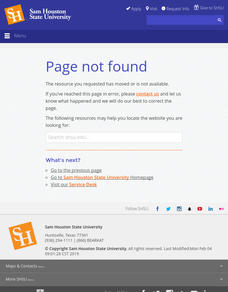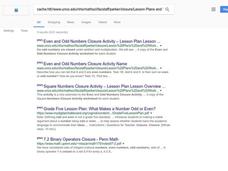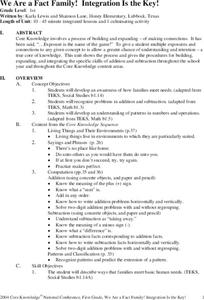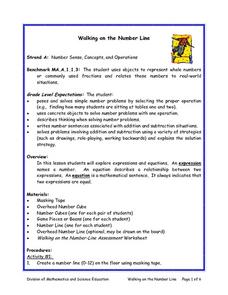Curated OER
Technology: Koo Koo for Clocks
Third graders design and make clocks compiling a materials list, creating adesign portfolio, and recording progress in a daily log. After making a full-size drawing of their clocks and with the assistance of high school technology...
Alabama Learning Exchange
Systems of the Human Body
Students research systems of the human body. In this biology lesson, students read the book Yucky Story and identify the systems of the human body. Students create a Powerpoint presentation to demonstrate their knowledge of the content.
Curated OER
Dinosaurs---Read All About Them!
Students read all about dinosaurs. In this biology lesson plan, students examine how to use library research as integral part of scientific research.
Alabama Learning Exchange
Writing Equations for Parallel Lines
Acquaint your class with the concept of parallel lines. Learners watch a PowerPoint presentation about how to write equations of parallel lines. Their understanding of linear equations and slope is taken a step further by the exercises...
Curated OER
Maya Math: Addition and Subtraction
Students examine how ancient Maya counted, and practice addition and subtraction using Maya number glyphs.
Curated OER
Add and Subtract with Hudson River shipping
Rivers aren't just a place for animals to live, they also provide industrial transportation. The class will examine the Hudson River on a map, discuss all the commercial vessels that use the River to transport materials, then complete a...
Teach Engineering
Bone Density Challenge Introduction
Can you use X-rays to measure bone mineral density? This is the essential question that learners must answer in the first installment of a seven-part series. They brainstorm ideas about necessary background information and what they...
Curated OER
Addition of Fractions: Pre-test
In this fraction worksheet, 6th graders take a pre-test about what they may already know pertaining to addition with fractions. Students respond to 8 multiple choice questions and self check answers with this online interactive...
Curated OER
Come Fly with Me . . . Open a Book: Travels through Literature
This detailed overview of a curriculum unit suggests using travel literature to engage and stimulate your third graders’ interest in reading. The suggested reading list includes fiction and non-fiction materials and offers urban children...
Curated OER
Real Number System
Ninth graders discuss the real number system and its' properties. In this algebra lesson, 9th graders discuss rational, irrational, closure, real numbers and the distributive property of algebra. They solve problems using these...
Curated OER
Even and Odd Numbers Closure Activity
Students explore the concept of closure. In this closure lesson, students discuss what it means for something to be closed by using examples of juice and gases. Students add and multiply combinations of even and odd numbers to...
Curated OER
We Are a Fact Family! Integration Is the Key!
Students practice addition and subtraction. In this fact families unit, students practice finding sums and differences for fact families. This unit includes ten lessons with science and social studies integration.
Curated OER
Buggin' Out (Identifying and Adding Amounts of Money)
Students explore consumer math by participating in estimate exercises. In this currency instructional activity, students identify and define each piece of U.S. currency and their value to the monetary system. Students complete several...
Curated OER
Distributive Property
Students solve problems using distribution. In this algebra lesson, students factor equations using the distributive property. They graph their solution on a graph.
Curated OER
Living on Your Own -- Let's Calculate the Cost!
Young scholars review basic math skills, such as addition, subtraction, multiplication, division, finding averages, and working with percentages. They see how these skills apply to real life situations.
Curated OER
Pond Theme Unit
For this pond theme worksheet students research facts on pond life. Students complete comprehension questions, crosswords, word search, and math puzzles. Students write a short report.
Curated OER
Harnessing Wind
Young scholars explore the ways that engineers study and harness the wind. They study the different kinds of winds and how to measure wind direction. In addition, students learn how air pressure creates winds and how engineers build and...
Curated OER
Walking On The Number Line
Students investigate the concepts of expressions and equations while defining the similarities and differences. They explore the operations by using a number line and record answers while working with the teacher. Students play the game...
Curated OER
Beautiful Butterfly Tiles
Third graders create a butterfly drawing that includes the elements of art and principles of design. They create artwork that can be made into ceramic tiles to be installed around the classroom doorways in our new addition.
Curated OER
Beads, Balls, and Beakers
Young scholars analyze the amount of space required to pack round objects. In this geometry instructional activity, students practice using space economically by practicing packing spheres into beakers. They then translate this concept...
T. Smith Publishing
Finding Percentages 6A
A list of 20 two to three-digit numbers asks math whizzes to determine specified percentages for each. The publisher has linked the assignment to CCSS.Math.Content.6RP.3, and it is targeted at the discreet skill of finding a percent of a...
Curated OER
Counting Chart
Elementary learners discover counting through a counting chart. In this math lesson plan, students identify numbers 1-100. They then point or recite their counting numbers.
Curated OER
Crime Scene Documentation
Students become forensic investigators. In this crime scene instructional activity, students go to the science lab which is the "scene of the crime." They collect evidence such as fingerprints, "blood" evidence, chromatography,...
Curated OER
Number Cents
Students identify the value of coins. In this number cents lesson, students use coins to create sets of equivalent values. They create patterns with coins and write the value of coins in two forms. Students count the value of given coins.

























